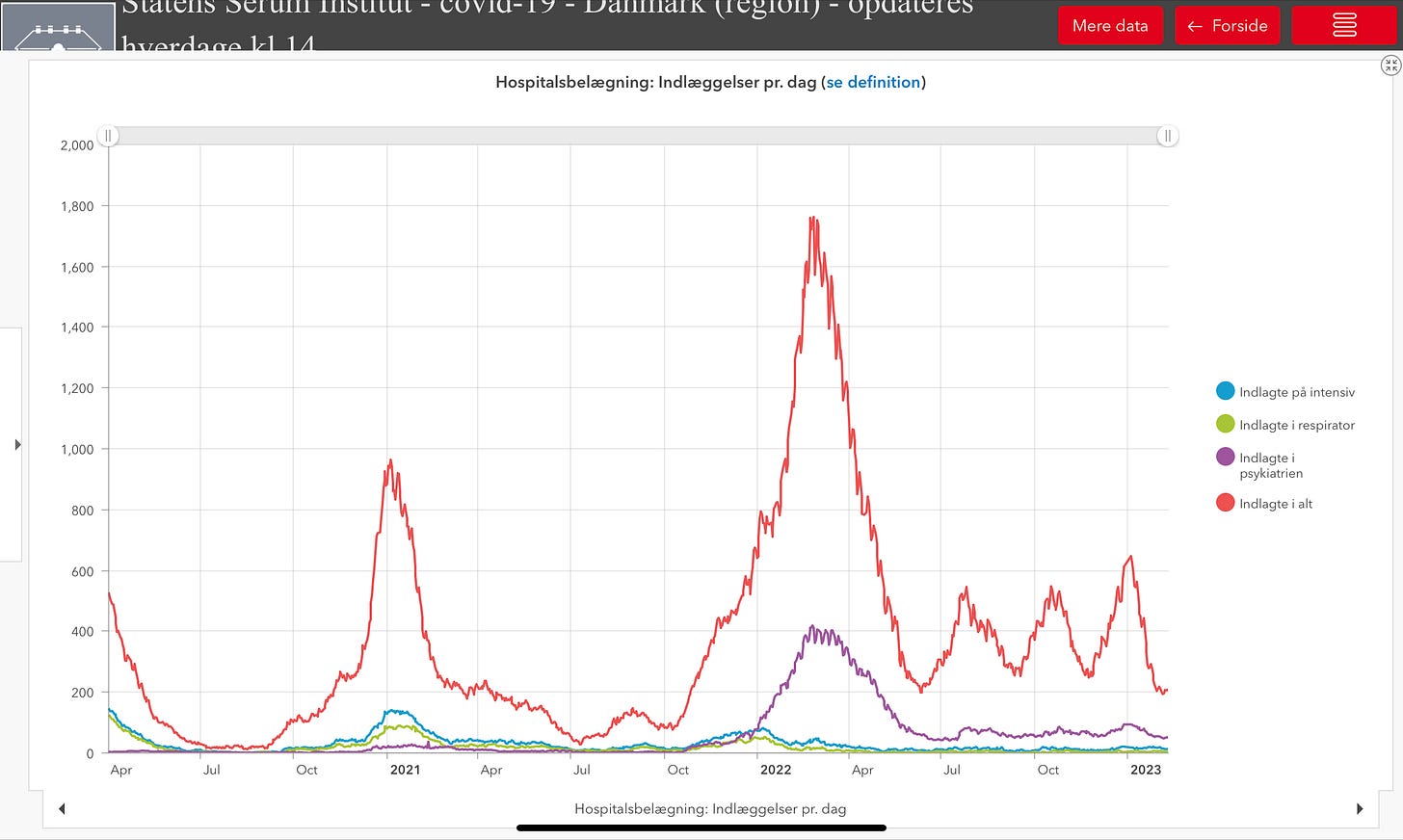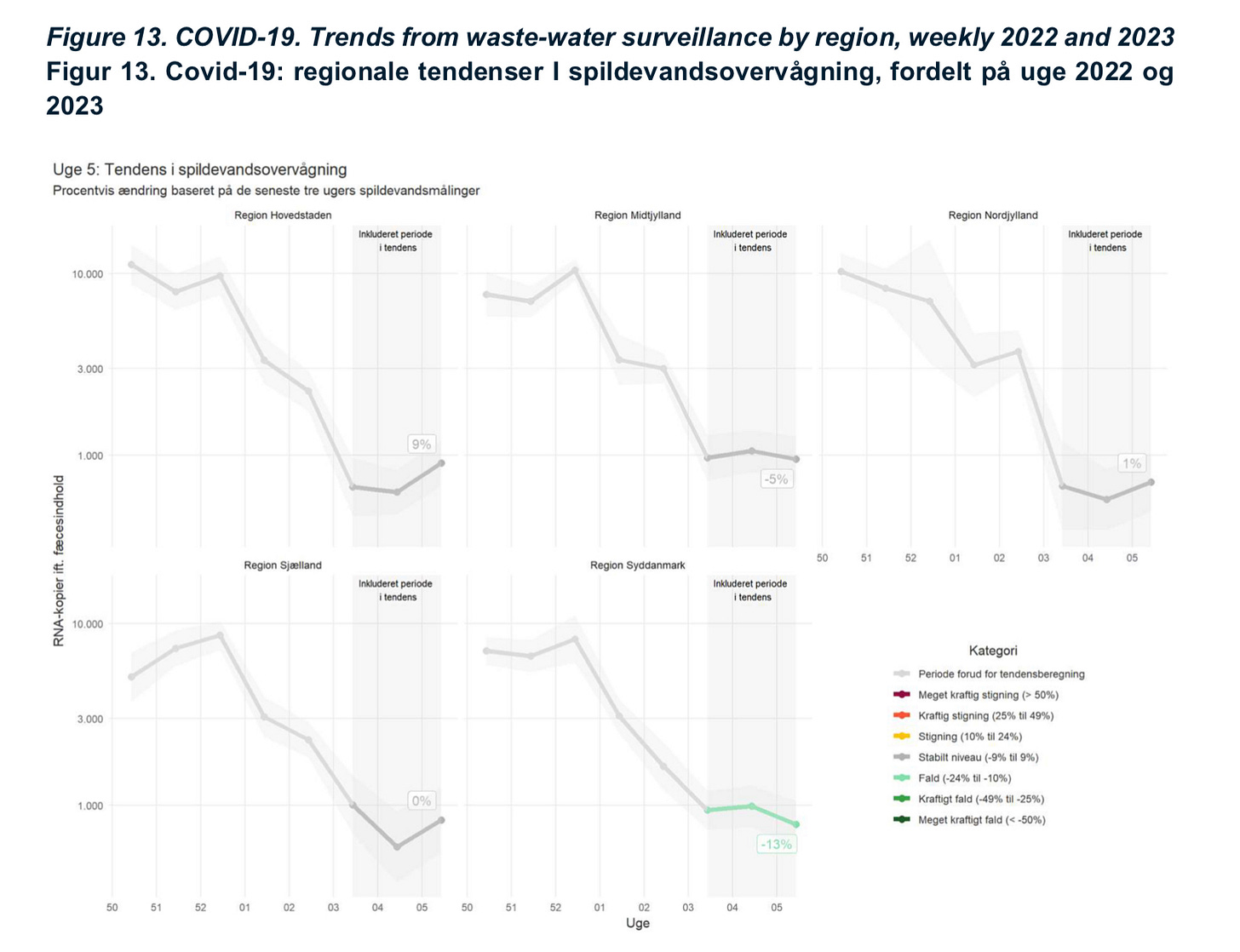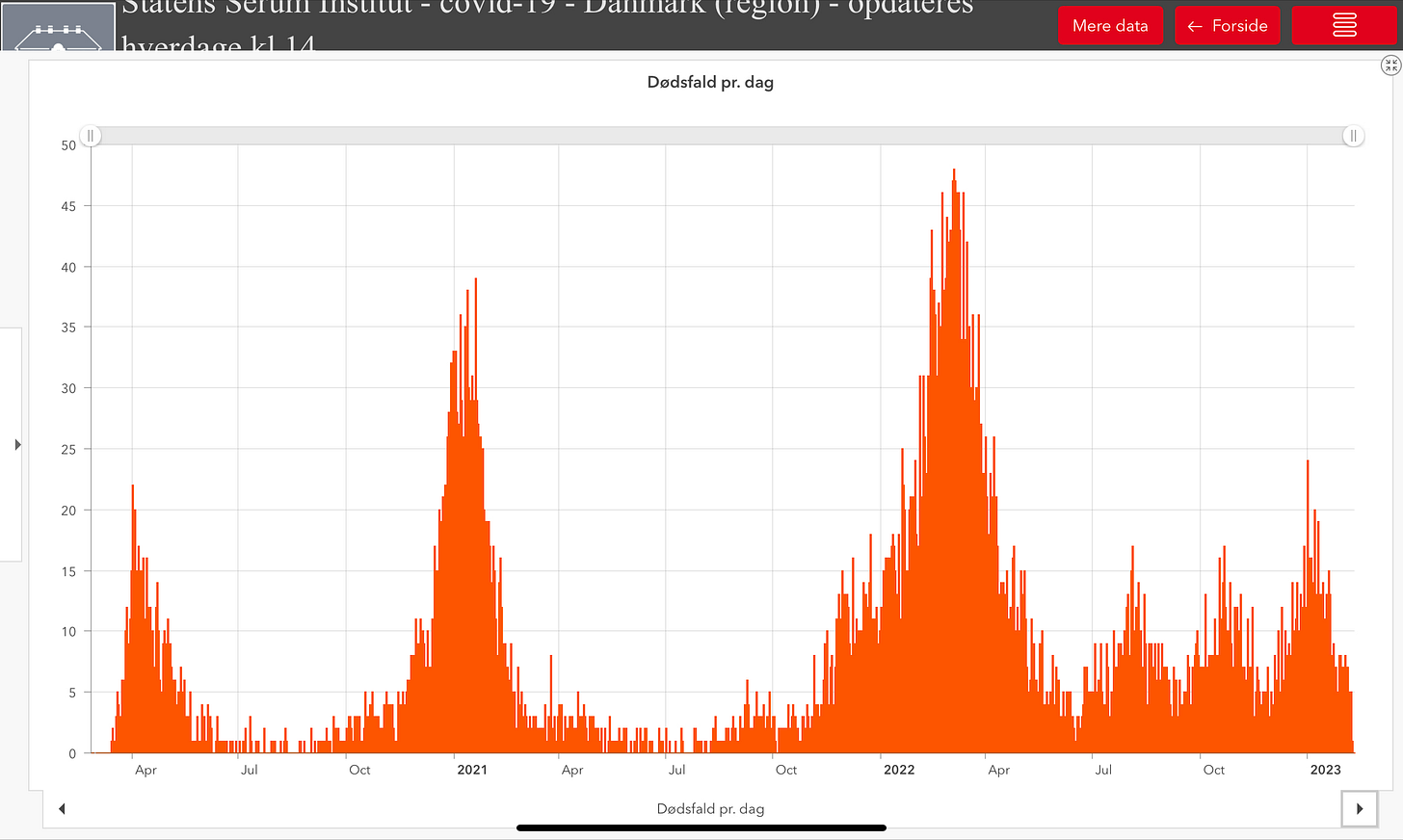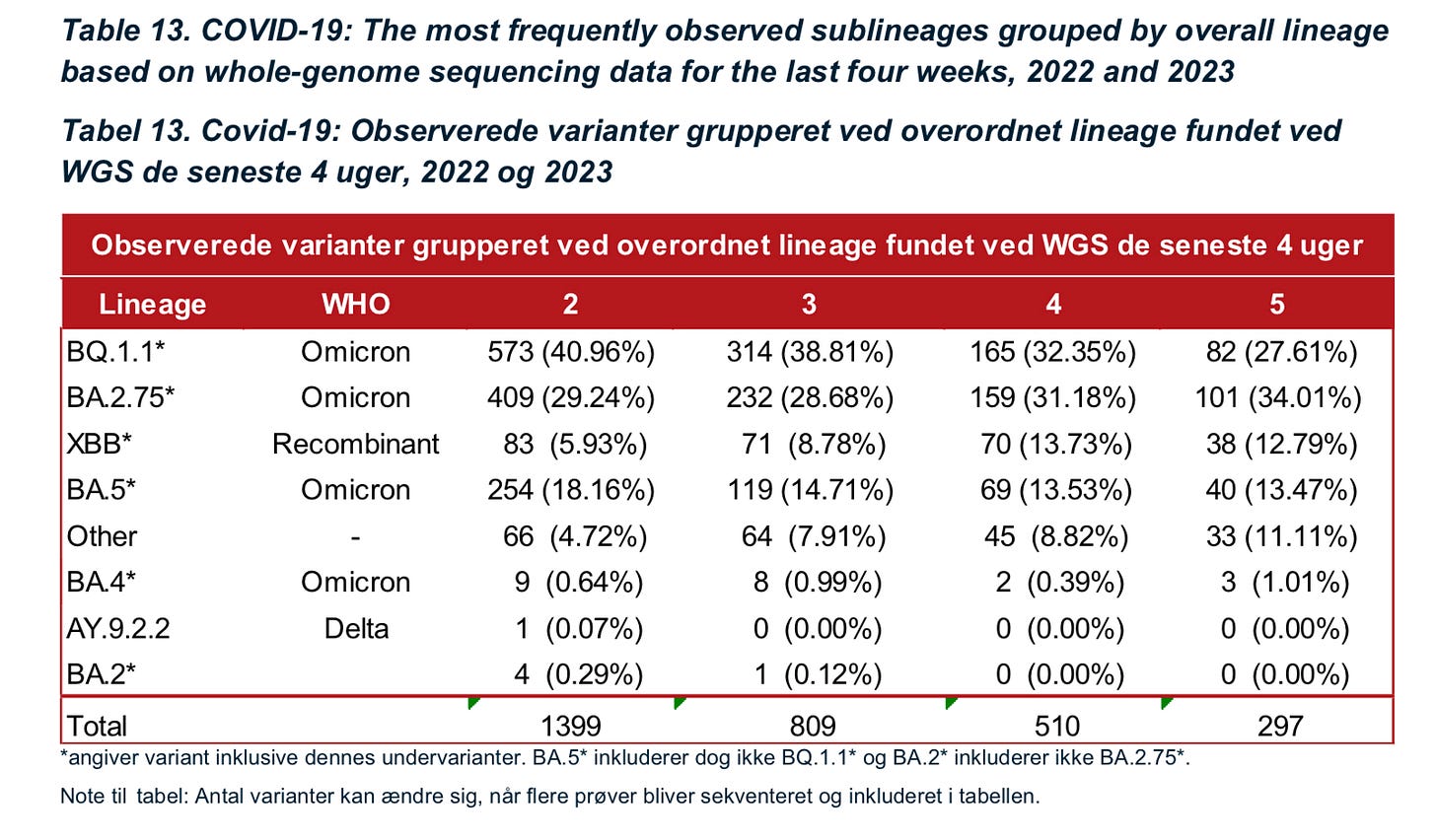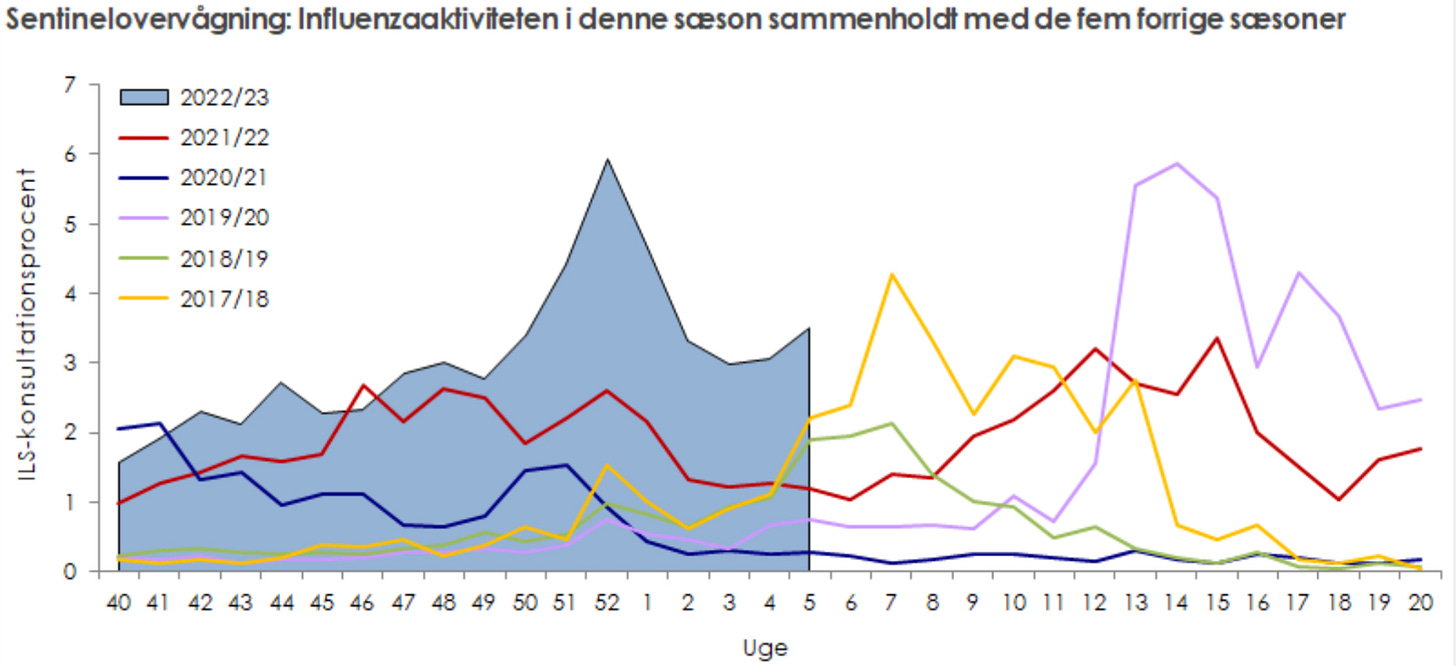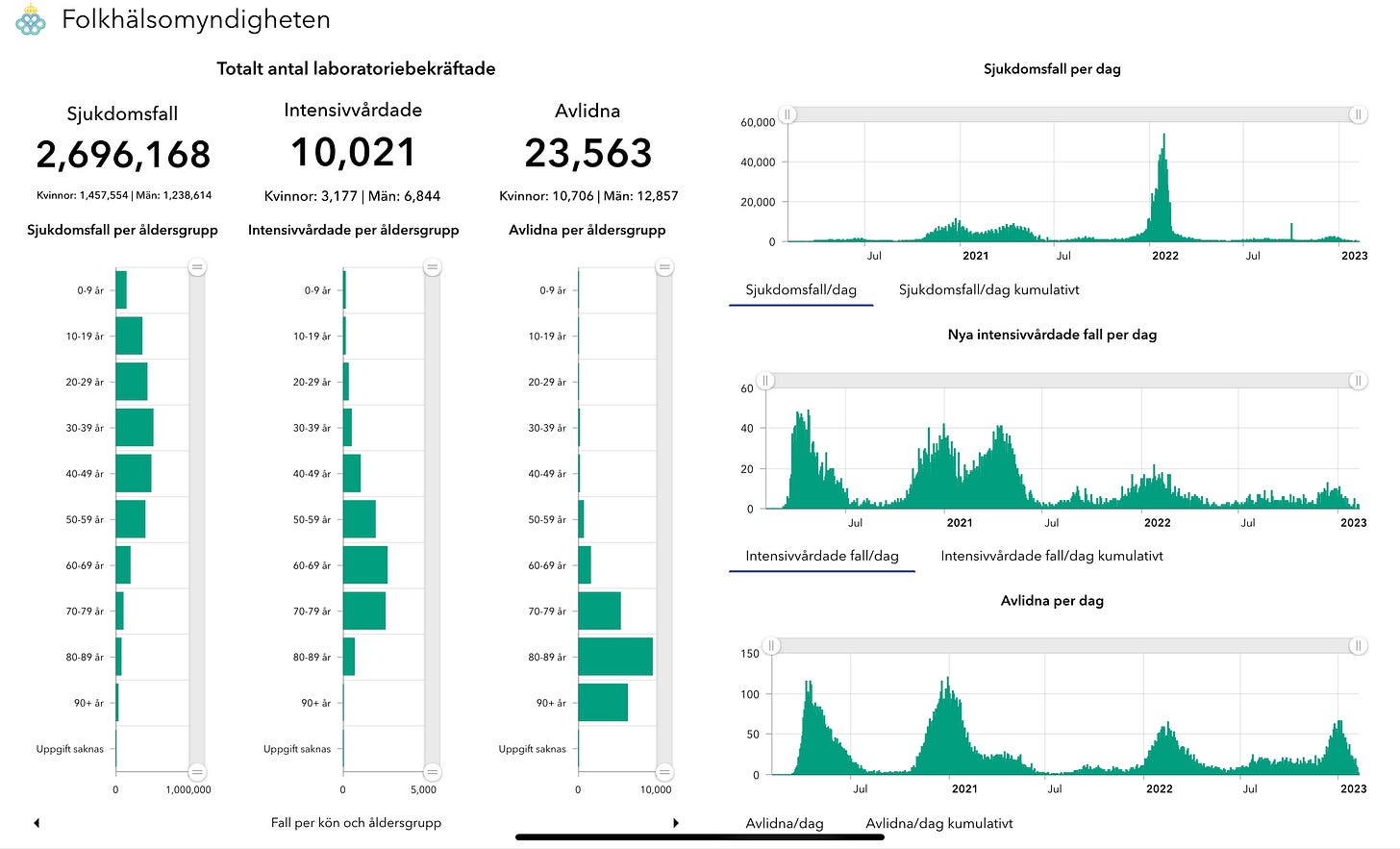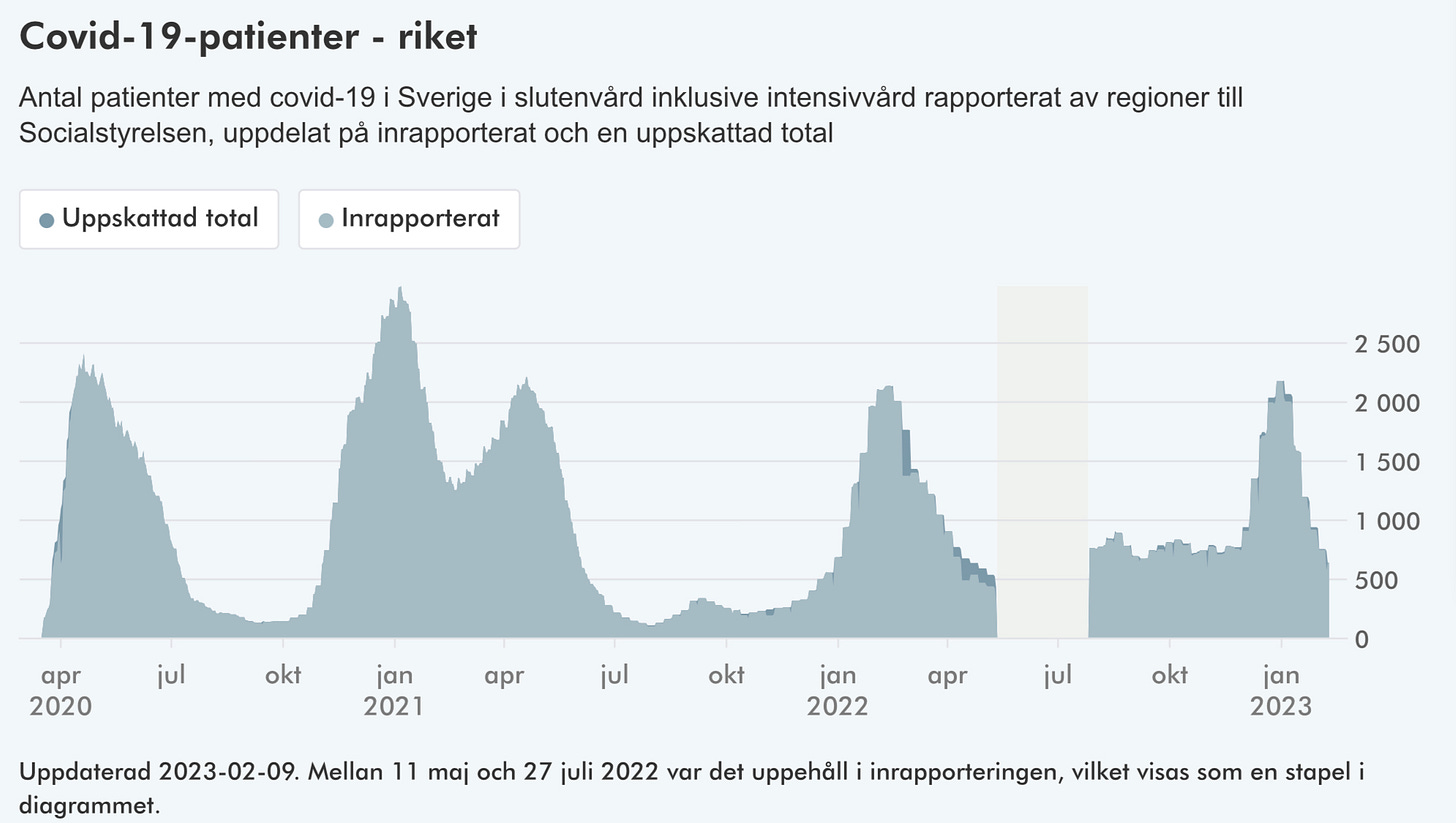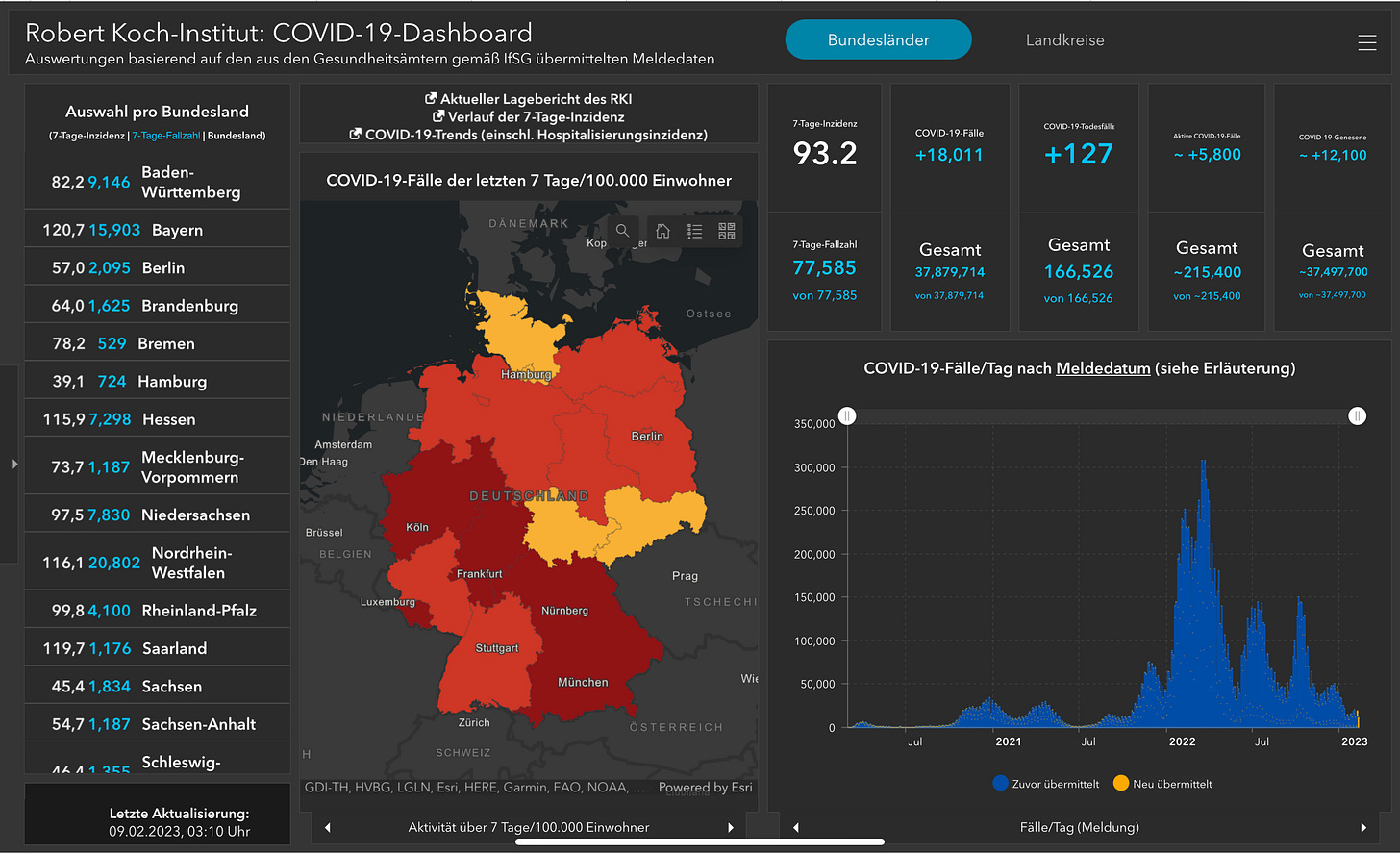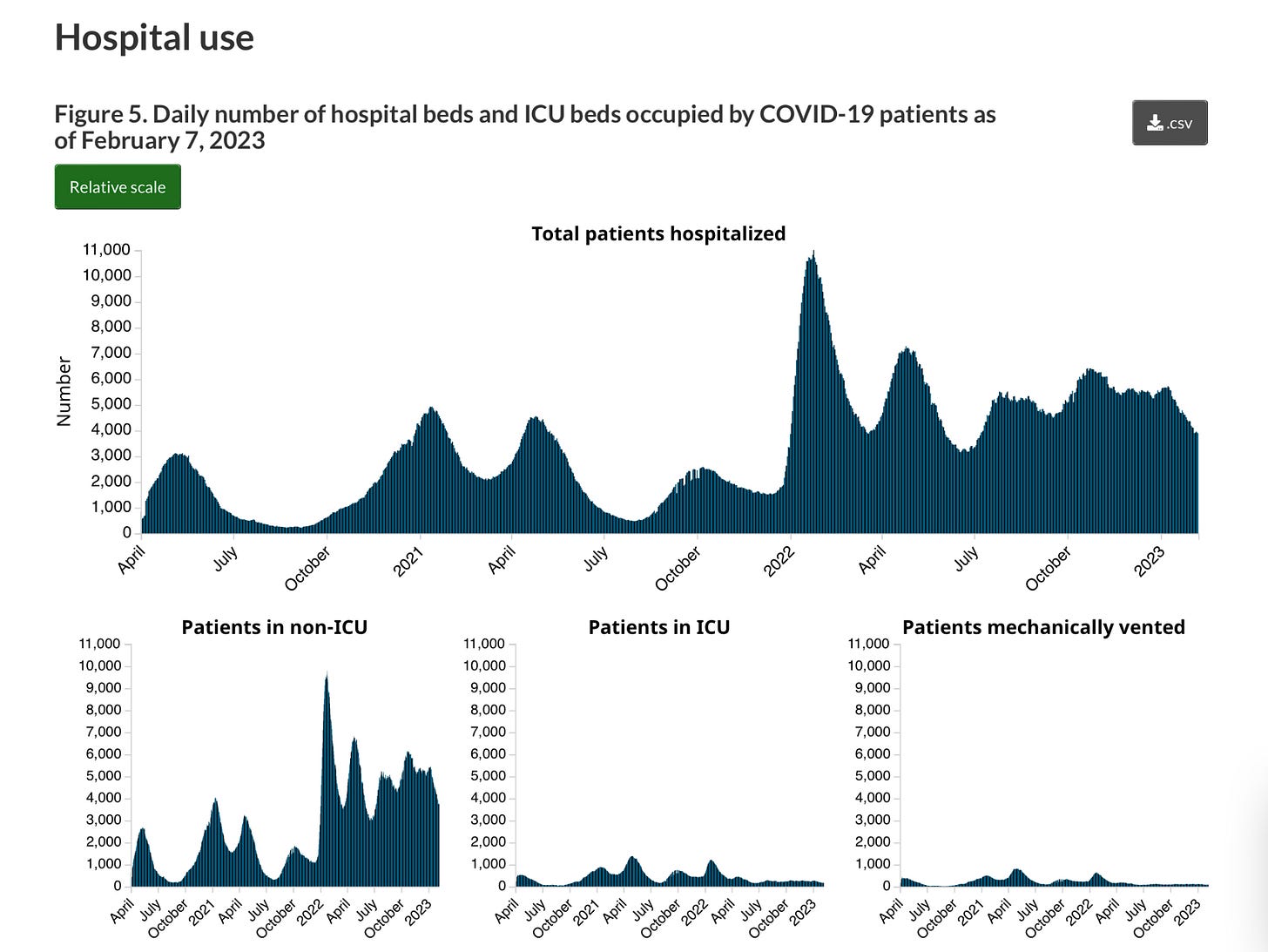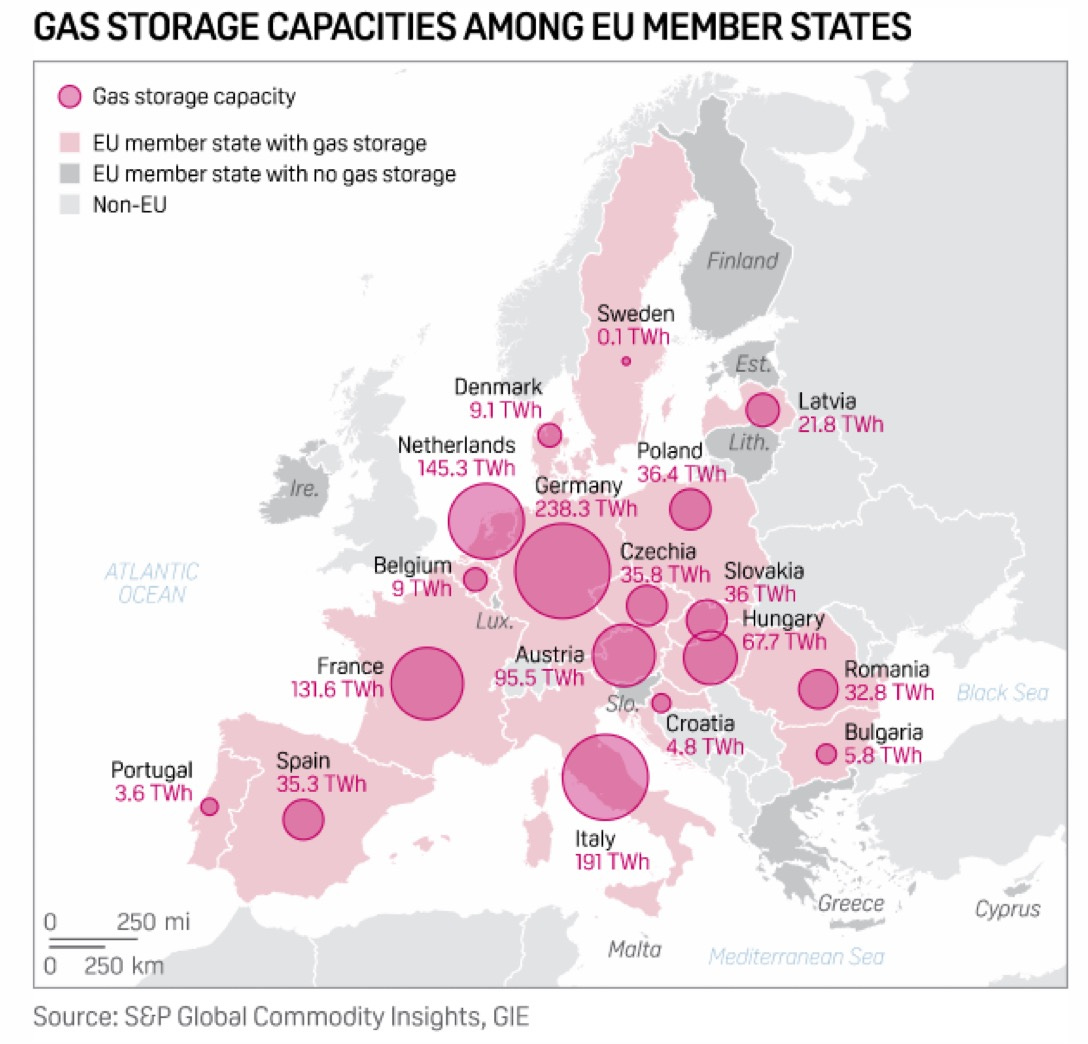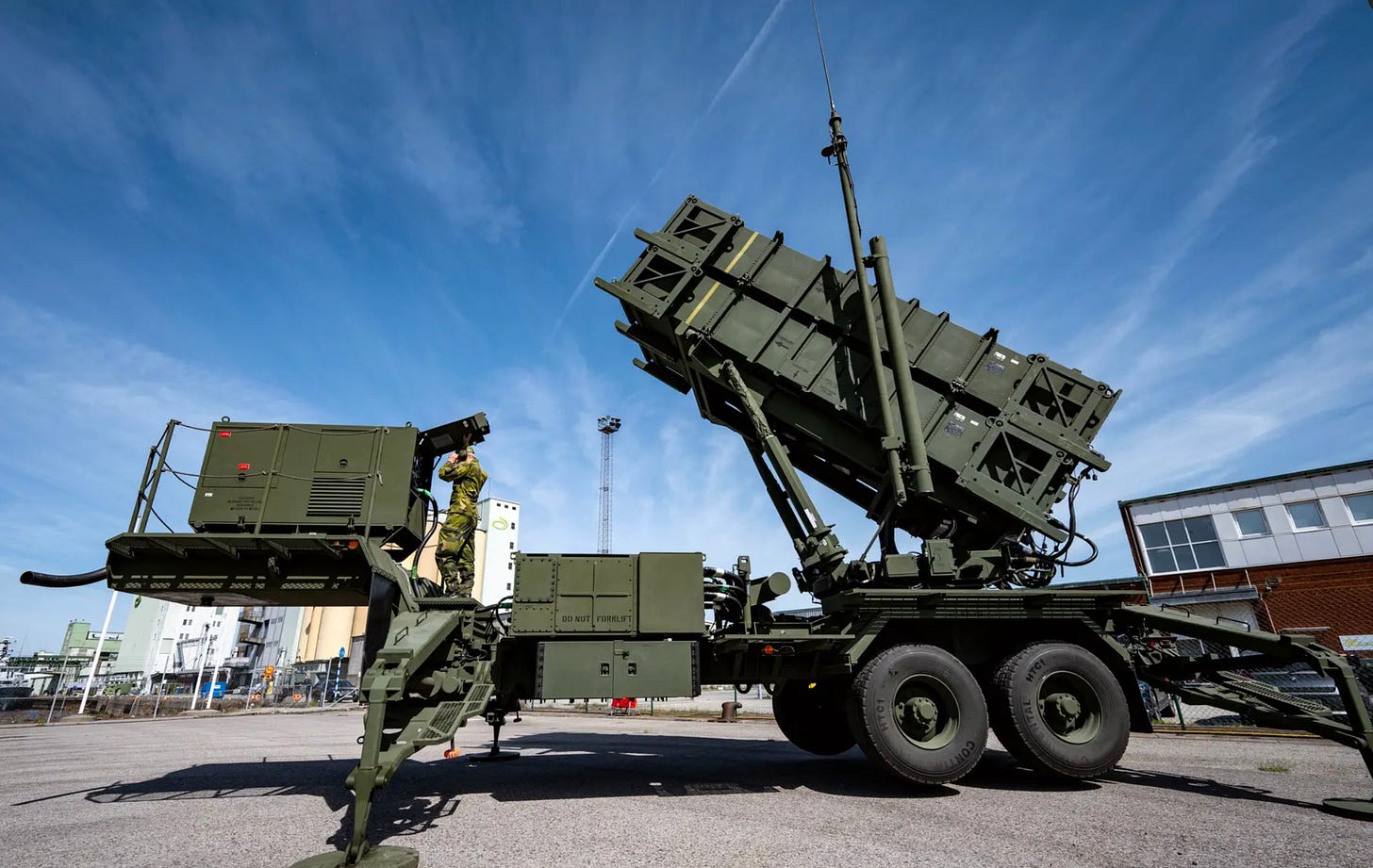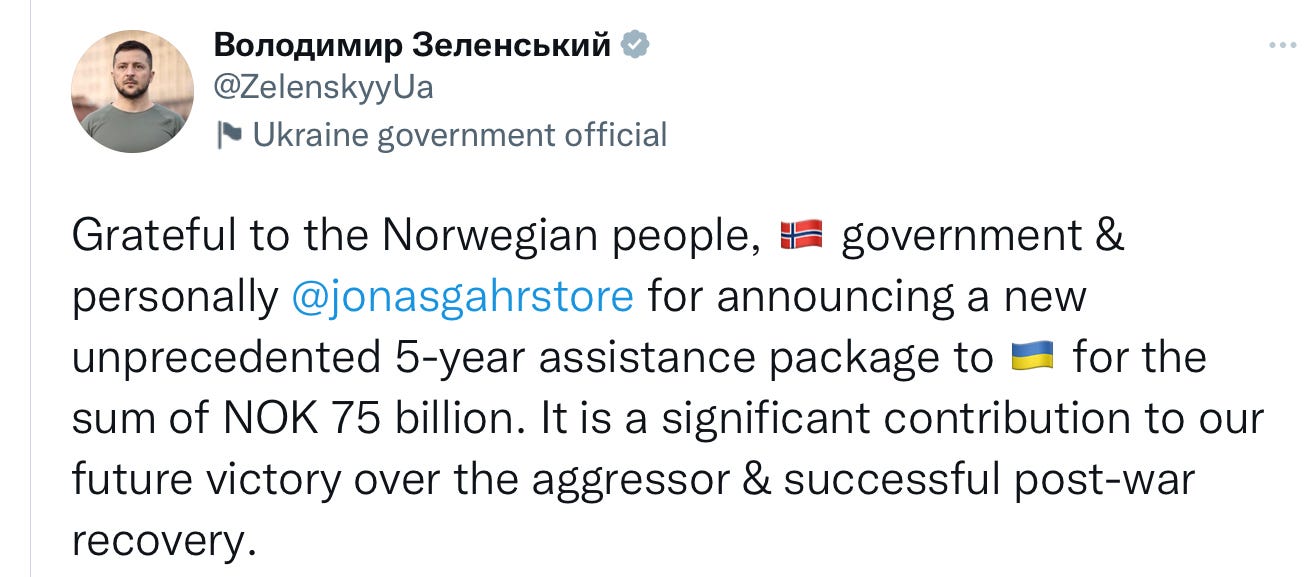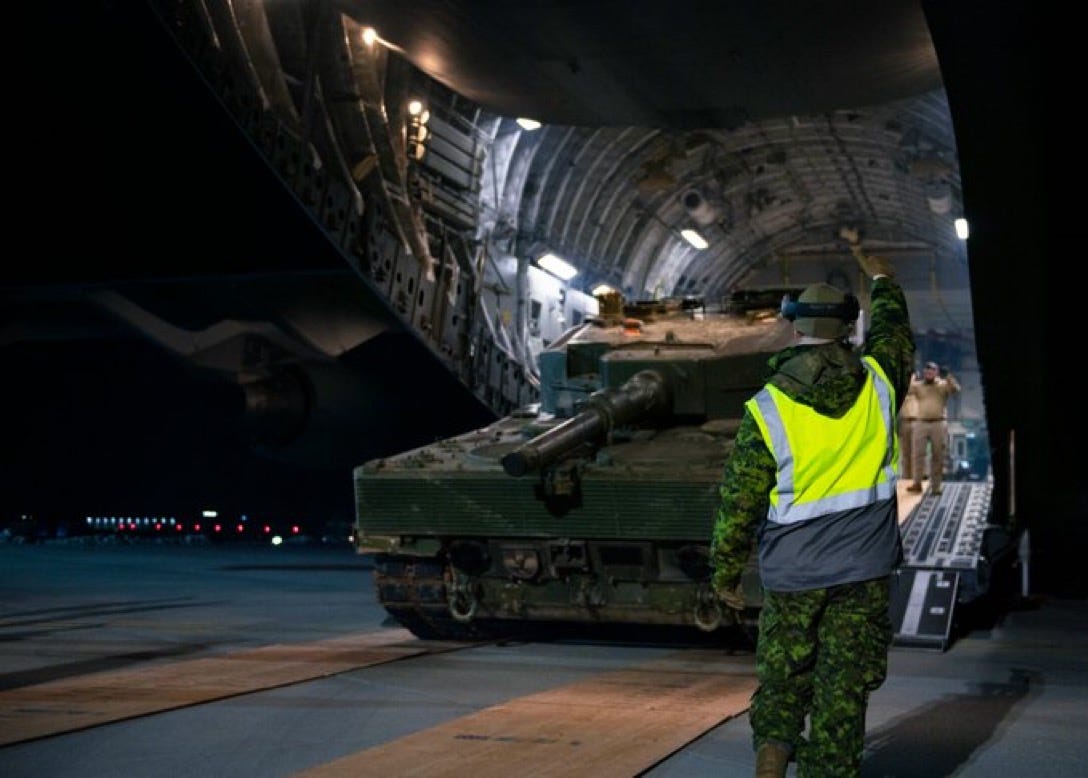🦠Pandemic🦠
🇩🇰
Most COVID numbers continued to drop across Denmark last week but there are some signs of potentially increasing virus activity. That is according to the latest weekly pandemic assessment from the Statens Serum Institute.
COVID hospitalizations increased slightly last week with 177 new admissions, which is 33 more than the week previous. As has been the case for over a year, seniors 70 to 89 years old continue to make up the largest proportion of new admissions
As for daily hospitalization numbers (205) they dipped slightly (-3) while the number of severe infection cases in an ICU (13) is unchanged day to day and of those, the number on a ventilator (3) inched down (-1).
Infection-related admissions to a psychiatric facility (49) are down (-3).
-
Another more reliable barometer is COVID wastewater surveillance. The SSI says for a third week in a row virus activity nationally was stable week to week. Among the five Danish regions only Region Syddanmark saw coronavirus activity decline from one week to the next.
-
The number of new infections, a very unreliable statistic due to very low testing numbers, has stopped falling and has now stabilized. The COVID incidence rate per 100,000 people eased to 17 last week, down slightly from the previous week’s 18. PCR testing numbers, which are already abysmally low, dropped by another 11% from week four to week five. While the positivity percentage increased slightly going from 6.9% to 7.2%.
Elderly seniors over the age of 80 had the highest coronavirus incidence rate last week as numbers increased from 36 cases per 100,000 people to 48. This likely contributed to the increase in hospitalizations. Those 40 to 49 years old had the highest weekly positivity percentage at 9.2%. The number of infections is stable among vulnerable seniors in care the weekly positivity percentage has risen again for a third week in a row to 5.9%.
-
As for daily numbers, Denmark is reporting a mere 167 COVID cases (underreported), including 86 reinfections, and one more coronavirus death over the last day.
With just 2,421 PCR tests taken on Wednesday, that equals a positivity percentage of 6.89%. The 7 day rate is 7.8%.
-
It continues to be a COVID variant soup in Denmark. Of note, as of last week, BA.2.75, which has been steadily increasing its numbers, made up 34.01% of sequenced positive tests (what few are still being sequenced) overtaking BQ.1.1.
-
The Statens Serum Institute is monitoring the protection level of the 2nd COVID booster shot every week. It says those with a 4th dose, the target group in Denmark is people 50 years old and older, are approximately 70% better protected against a severe infection resulting in hospitalization and 78% protected against death than those with three doses.
-
While the coronavirus threat seems to be fading the concern in Denmark has shifted to influenza as infection numbers for both the A and B strains are rising again. The Statens Serum Institute says the increase is more significant for the flu B strain. The rise in flu cases is also being accompanied with increasing influenza-related hospitalizations.
The institute says it assess the effectiveness of the flu shot against the A strain to be 42% while protection increases to 78% against the B strain. However, protection offered by pediatric doses for children two to six years old is much higher, 79% against influenza A and 94% against the B variant.
The SSI says the RS virus wave continues to fall with infections and hospitalizations steadily dropping.
🇸🇪
Sweden has added 1,275 infection cases (wildly underreported) and another 115 corona deaths in the last seven days.
COVID hospitalizations (642) are down (-108).
So far, 82.1% of seniors 65 years old and older have a 2nd booster dose.
-
The pandemic situation in Sweden’s capital region continues to improve. There are 192 infected people hospitalized in Region Stockholm as of Tuesday this week, 34 fewer than the week before. For a second week in a row the region registered no infection-related ICU patients.
Chief Physician Johan Bratt:
“We can state that the COVID situation and also influenza and RS virus have improved significantly in just a few weeks. The number treated for coronavirus continues to decrease and we have a clear downward trend.”
Bratt says the biggest reason infection numbers are falling is because of COVID vaccines.
“One of the reasons why the spread of infection is going down and that fewer people are being treated for COVID is that people are getting vaccinated. Vaccines save lives. A downward trend therefore does not mean that you should not vaccinate, but the opposite continue to take the vaccines that are offered.”
The region registered 189 new infections in its latest weekly report, a number extremely underreported due to Sweden’s testing policy.
The region also suffered 90 more pandemic deaths. Of the 6,170 lives lost to date about one-quarter have been seniors in care.
-
Sweden will launch a fifth round of COVID vaccinations before the next winter arrives. The Swedish Public Health Agency is recommending a 3rd booster dose for anyone 18 to 49 years old who is in a high-risk or vulnerable population. Also the agency says everyone 50 to 64 years old will also need another dose.
For those who are in the 18 to 49 year old age group but who are not at high-risk, the health agency says they will also be able to get another booster dose if they so want.
Unit Head Sören Andersson:
“Thanks to the fact that we continuously receive new data and knowledge about the virus, we can update and adapt our recommendations on vaccination. We know that there is now good immunity in the population and that it is rare for people under the age of 50 who become infected to need ICU care. But the risk of severe infection increases among the elderly, and therefore people in certain age groups need another booster dose.”
The agency stresses the pandemic is not over and that it is following virus developments closely.
-
Region Skåne, in southern Sweden, says the seniors over the age of 65 are included in the next round of COVID booster dose vaccinations.
Vaccine Coordinator Anna Lindén:
“Those aged 80 and over will be contacted by their health centre. Other groups can book an appointment to a procured vaccination reception or health centre, via 1177.se or telephone. There is also a mobile vaccination bus that offers drop-in around Scania.”
For elderly seniors and those in care homes the region says the recommendation is for two booster doses each year. One is given in the spring and another in the fall as long as there are a minimum of six months between doses.
The third round of booster doses in Sweden will begin in March and will remain available until the following February. Region Skåne says population-level immune protection remains very high in Sweden with 94% of the population having COVID antibodies according to the latest survey.
🇳🇴
The COVID wave is over but respiratory infections like influenza and RS virus continue to be a concern in Norway according to the latest weekly snapshot from the Norwegian Institute of Public Health.
Infection Control Director Trygve Ottersen:
“The trend is still downward, but the decline has been slower in recent weeks. Hospitalizations with respiratory infections are now in the same order of magnitude as in the winter seasons before the pandemic. The further development of the epidemics this winter is uncertain.”
The number of COVID hospitalizations has reached a low not seen since the summer of 2021. While COVID numbers continue to tumble, the institute notes the decline has begun to slow down in recent weeks. 57 infected people had to be hospitalized last week, down seven from the week before. Intensive care numbers trod water with five last week, the same as the week prior.
The virus claimed 12 more lives in Norway last week, 15 fewer than the week previous.
On the variant front, the institute the BQ.1.1 strain continues to be dominant but BA.2 sub-variants like BA.2.75 are seeing increased growth.
The institute says the RS virus epidemic is still ongoing, but infection numbers have been “relatively stable”. New hospital admissions have “increased somewhat” over the last three weeks. There were 198 hospitalizations last week. While most admissions continue to be children under the age of five, the institute notes it is seeing increasing admissions among seniors. The RS virus weekly positivity percentage is 13.3%. But for children four years old and younger it rises to 37.3%.
The NIPH is concerned that influenza infections, which had been dropping rapidly, may now be picking up new steam. It says cases involving the flu’s B strain have been “gradually increasing.” It says flu activity also varies a lot depending on where you are in Norway. The regions of Agder and Rogaland were seeing the highest number of flu infections, while Troms and Finnmark appear to be nearing the end of the influenza outbreak.
The influenza positivity percentage last week was stable, at 15.4%. Flu-related hospitalizations are also stable with 220 admissions last week.
Influenza vaccination uptake in Norway continues to leave a lot to be desired. 63.5% of seniors have the jab. Among those 18 to 64 years old who are in high-risk groups, the vaccination rate is just 34%. While a pathetic 7.4% of children under the age of 7 have had a flu shot.
🇩🇪
Germany registered 18,011 new infections in its Thursday update while losing another 127 lives to coronavirus.
It added 1,424 more hospitalizations, while ICU numbers (686) increased (+20). As a percentage of all intensive care beds in the country people with severe coronavirus infections were using 3.2%.
🇨🇦
The Public Health Agency of Canada recorded another 10,356 new infections while another 187 Canadians have died in the pandemic.
The weekly positivity percentage is 11.3%.
For the most part, COVID hospitalizations continue to drop across Canada. In the week ending February 7, the total number of hospital beds being used by a pandemic patient fell by 300 to 3,891 beds in use. Most of those were among General admissions, which tumbled from 4,008 to 3.709 from one week to the next. Intensive care capacity inched down by one to 182 beds in use. Only the number of severely infected people on a ventilator bucked the trend, with numbers creeping upward by five to 91.
⚡️Energy Crisis⚡️
Temperatures across Europe were not as cold in week five as they were the previous week. With heating demand easing a little, EU natural gas reserves still dropped from 73.82% to 70.42% from week to week. Natural gas reservoirs still remain at about 20% above seasonal averages.
Some European countries saw both energy consumption and withdrawals from gas reserves still exceed forecasts while others didn’t. France had the biggest week-to-week withdrawals from its gas stocks (-0.8%) followed by Romania (-74%), and Belgium (-0.6%).
Spain continues to maintain the highest level of gas reserves (88.8%) among EU nations. Poland (83.21%) and Germany (77.25%) are just behind it. Hungary has the lowest level of natural gas reserves (56.7%), along with Romania (60.74%) and France (61.16%).
Continuing problems with French nuclear power reactors, usually a major power generation supplier, have caused France to lean much harder on its natural gas reserves.
On the other hand, Germany, thanks to gas savings and a warm winter, has done better at saving gas than any other EU nation. So far, Germany has recorded exactly one week this winter, with gas consumption exceeding historical averages. It is in such a good position that the country’s energy regulator is cautiously signaling that the energy crisis, at least for this winter, may be over.
But, some experts are sounding a warning noting that Europe’s energy crisis is going to last years and be a persistent winter concern amid the energy transition. In particular, they are warning against complacency especially with the massive helping hand from record-breaking warm winter temperatures. Weather that cannot be relied upon to bail Europe out every winter.
🇳🇴
Norway’s largest power plant was knocked offline this week. The Tonstad power plant was shut down for safety reasons after a generator began smoking. The power plant will be offline for a minimum of seven days as they determine what is wrong and how serious it may or may not be. Tonstad power plant is the country’s largest power producer.
🇩🇰
Denmark’s national train operator, DSB, suffered a big bite out of its profits due in part to the energy crisis. DSB’s annual accounts show that the soaring electricity and diesel prices cost the company an extra 350 million Danish kroner last year, or about $69 million Cdn. Another factor was a lot fewer commuters using the train system especially for shorter journeys.
Managing Director Flemming Jensen spoke to DR:
“We need to get the commuters back on the shorter journeys in S train traffic to the big cities compared to before COVID. Where the commuters might have ridden with us five days a week before, they only go three days a week and work from home on the other days.”
DSB reported a profit of 229 Danish kroner last year, a significant drop from the previous year’s 805 million.
🇩🇰 🇪🇺
Denmark’s green energy transition has taken a huge blow after the Danish government suddenly slammed the door shut on permitting offshore wind turbine projects. The move sent shockwaves through the industry and even drew criticism from Brussels. The EU is leaning heavily on Denmark’s North Sea coast to become Europe’s green power plant by 2050.
The reason why is a bit confusing. Denmark offers an open-door scheme for companies to set up offshore wind turbines in areas not designated by the state. The Danish government says it discovered that the 24-year-old scheme might breach European Union rules on state aid.
However, the European Union was quick to say publicly that it had not made any request for the scheme to be put on hold.
Danish Prime Minister Mette Frederiksen attended an EU summit on Thursday and said she will take the issue directly to European Commission President Ursula von der Leyen.
🇺🇦/ 🇷🇺 War
🇩🇰 🇩🇪 🇳🇱/ 🇺🇦
The Danish Ministry of Defense says Denmark is working with Germany and the Netherlands to refurbish more than 100 Leopard 1A5 tanks and get them to Ukraine as quickly as possible. The ministry says work is underway to get two battalions, about 80 tanks, knocked into shape and delivered to Ukraine “within a few months.” The rest will follow shortly after.
Acting Defense Minister Troels Lund Poulsen:
“Ukraine badly needs tanks to withstand Russia's continued aggression. I am proud that Denmark has a large stake in the new collaboration with other countries to support Ukraine. Our collaboration on the donation of such a large number of Leopard 1 tanks goes well with other countries' delivery of tanks to Ukraine. Overall, it contributes to Ukraine's ability to fight for its own freedom.”
The package will include training Ukrainian troops on how to use the tanks, ammunition, and spare parts for upkeep and repair.
The ministry adds that the door is open for other European countries to join what is being called “The Leo 1A5 Initiative.” It says Belgium has already expressed interest in also coming onboard.
“This cooperation testifies to the great unity and the enormous will that exists in the West to support Ukraine's right to decide its own destiny.”
🇸🇪/ 🇷🇺
The Swedish Armed Forces have, for the first time, set up a Patriot missile system in the port of Gothenburg. Swedish newspaper Aftonbladet reports that this is not exercise but what the military is calling a preparedness operation. The port of Gothenburg sits on the entryway to the Baltic and is considered crucial for getting supplies to all of Sweden.
Aftonbladet says the Swedish Air Defense Regiment in Halmsted received what it called “an unannounced order” to go to Gothenburg and set up one of the country’s newly purchased Patriot air defense systems.
Per the Swedish Armed Forces website:
“Contingency operations are carried out to test how quickly and effectively our units and combat forces can act in a sharp situation. The operation is not prompted by any changed threat picture against Sweden."
Swedish Prime Minister Ulf Kristersson has said recently however, that the risk of an attack on Swedish soil is low, the country is in its most concerning security situation due to its NATO application. NATO’s Article 5, requiring other allied countries to come to another member nation’s aid if attacked, only applies to members of the alliance. Sweden’s membership is currently being held up by Turkey and Hungary. The other 28 NATO member nations have ratified Finland and Sweden’s application. The two Nordic nations need a yes from all 30.
🇸🇪
After a right-wing extremist, funded by a person with ties to the Kremlin, burned the Muslim holy book, the Quran, in Stockholm, Sweden’s security situation has “deteriorated.” That is according to the country’s intelligence service, SÄPO. In a press release, the agency says that Sweden is now "considered to be in greater focus than it was previously for violent Islamism globally.”
On that note, Swedish police refused to issue a permit this week for another burning of the Quran in Stockholm, this time in front of the Turkish Embassy. The police, after consulting with SÄPO, cited security reasons for refusing the permit.
🇳🇴/ 🇺🇦
The Norwegian government announced it would send billions of dollars for weapons and humanitarian aid to Ukraine for the next five years. The fiscal pledge was announced this week with a 15 billion Norwegian kroner per year price tag (about $2 billion Cdn).
Prime Minister Jonas Gahr Støre
“We propose that Norway must make a binding long-term contribution to Ukraine over several years. Our support to Ukraine’s struggle for freedom and independence is firm and long term.”
The deal must still be approved by the Norwegian parliament.
Ukrainian President Volodymyr Zelenskyy was quick to respond on Twitter.
🇨🇦/ 🇺🇦
Canadian National Defense Minister Anita Anand says the first Leopard battle tanks donated to Ukraine by Canada have arrived. In all, Canada has committed to donating four Leopard 2 tanks to Ukrainian forces. The tanks will come with a contingent of Canadian Armed Forces personnel to train the Ukrainians on how to use the tank.
“The first Canadian Leopard 2 main battle tank that we've donated to Ukraine has now arrived in Poland. Alongside our allies, we’ll soon be training the Armed Forces of Ukraine in the use of this equipment. Canada will continue to stand with Ukraine.”
🇩🇰/ 🇺🇸
The ties that bind the United States and Denmark have become a little tighter. The two countries have signed a new agreement making Denmark one of just 12 countries with which the U.S. will trade defense equipment.
The Deputy Director of the Danish company Terma in Grenå, Kasper Hyllested, told DR that the agreement is significant.
“It has a symbolic meaning, and it will concretely also improve our opportunities to enter into new contracts with the US defense. Seen from Grenå's perspective, there will therefore be a need for skilled people in the next several years.”
Terma makes a part of the F-35 fighter jet that will replace Denmark’s aging fleet of F-16s.




